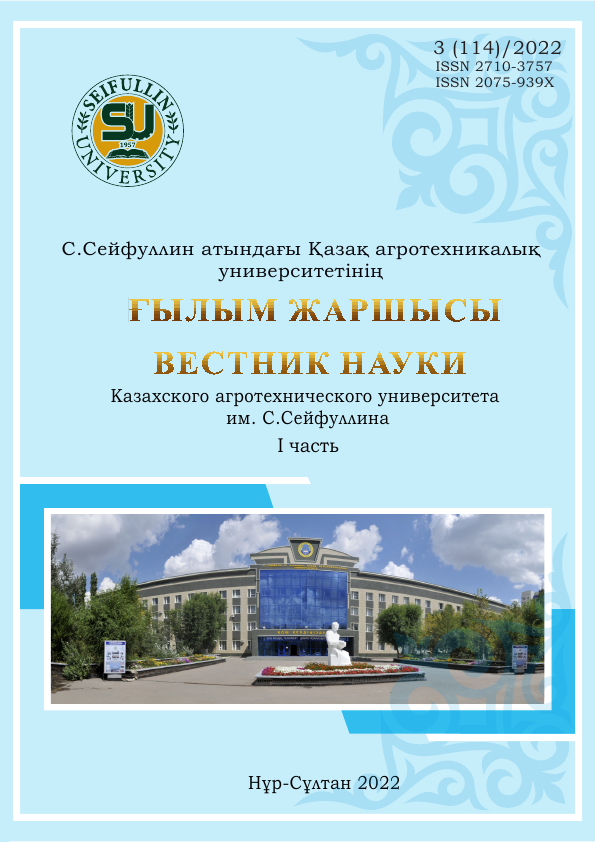LOGISTIC REGRESSION ANALYSIS THE RISK INFECTION BY CRYPTOSPORIDIUM PARVUM OF NEONATAL CALVES DEPENDING ON BREEDING TECHNOLOGY IN NORTHERN KAZAKHSTAN
DOI:
https://doi.org/10.51452/kazatu.2022.3(114).1137Keywords:
bivariant logistic regression analysis; Cryptosporidium parvum; calves; cattle breeding technology; Northern KazakhstanAbstract
Cryptosporidiosis is a zoonosis that causes high mortality in children under five year age and, therefore, is considered as a dangerous infection by the World Health Organization. It is known that modeling of epidemic processes is an important tool for prevention and control of infectious diseases. In agricultural regions with developed animal husbandry the main source of this invasion is young cattle infected with Cryptosporidium parvum. This paper presents the logistic regression analysis results in order to assess the impact of newborn calves’ breeding technologies for C.parvum prevalence in cattle farms in Northern Kazakhstan. To this purpose, in 2019-2020, fecal samples were collected from 245 newborn calves under one month age in 24 farms in 13 districts of this region. Samples were examined by traditional microscopic methods and commercial immunochromatographic kits for Cryptosporidium. The infection was detected in 69.2% of districts, in particular, in large industrialized farms and medium-sized farms. Prevalence of C. parvum among calves was 1.6-29.1%. As a result of bivariant regression analysis of the data obtained in the R program, it was statistically significantly established that the technology of separate breeding from mother cows is associated with a high degree of invasion of newborn calves by cryptosporidia. This proves the importance of production technologies in the prevention of cryptosporidiosis of neonatal calves.

